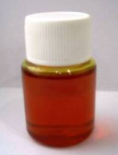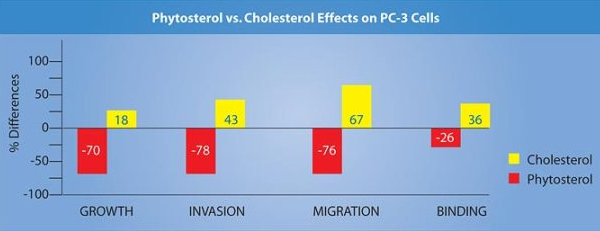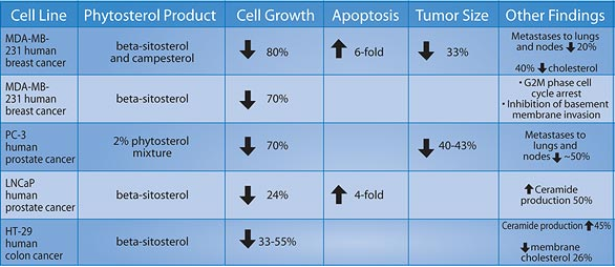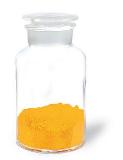SinnolZym contains an “adaptogenic” mixture of fermented herbal compounds including policosanol, Cerulin and Zorvan (phytosterol), hydroxycitric acid (HCA) and berberine in a synergistic proprietary formula designed to promote anti-cancer effects. Policosanol is a mixture of fatty alcohols isolated from the sugar cane. Policosanol has been associated with lower levels of LDL or “bad” cholesterol. Policosanol has also been associated with lower improved coronary artery health. In clinical studies, policosanol has demonstrated anti-inflammatory, antiviral, and neuroprotective properties.
Cells need a constant supply of energy to maintain bioenergetic and survival. Upregulation of aerobic glycolysis, a phenomenon known as the Warburg effect, is a common characteristic of cancer cells. This work demonstrates that activation of the oncogene Akt is sufficient to switch cancer cells to a glycolytic metabolism recapitulating the Warburg effect. However, Akt-transformed cells become dependent on glucose availability for their survival. Akt-expressing cells become impaired in the ability to metabolize non-glycolytic bioenergetic substrates and maintain their survival. Interesting, activation of AMP-kinase (AMPK) rescues Akt-expressing cells from their glucose-addiction.
AMPK is a cellular energy sensor activated by conditions of metabolic stress characterized by an increase in the intracellular AMP/ATP ratio. AMPK activation restores cellular bioenergetics by inhibiting anabolic pathways that consume ATP and by activating catabolic reactions that generate ATP. In response to glucose deprivation, pharmacologic stimulation of AMPK induces oxidation of fatty acids as an alternative source of energy and rescues viability of Akt-expressing cells. Under suboptimal nutritional conditions cells can activate restriction point controls that allow the cells to switch from a proliferative to a quiescent state to maintain viability until nutrition is restored. This work identifies AMPK as the regulator of the glucose-induced restriction point. Upon glucose deprivation, AMPK phosphorylates p53 and activates a p53-dependent cell cycle arrest that allows cells to sustain their viability under these conditions. Loss or mutation of the tumor suppressor p53 is commonly found in cancer rendering tumor cells resistant to a variety of apoptotic stimuli.
The HMG-CoA enzyme that makes cholesterol in different tissues is very unstable. If too much cholesterol enters the cell or is made inside the cell, this enzyme destroys itself and inhibits its own synthesis. This is a necessary feedback to insure that too much cholesterol isn’t made. The policosanol lipids are actully alcohols and they mimic one of the cholesterol precursor molecules in inducing HMG-CoA to self destruct. Statin drugs (or HMG-CoA reductase inhibitors) are direct inhibitors of HMG-CoA molecules. They don’t induce HMG-CoA to destroy itself like policosanol. Therefore, we could use policosanol to reduce the actual number of HMG-CoA molecules in the cells, cancer cells in particular,
Policosanol powerfully activates AMPK. In fact, the policosanol dose necessary for AMPK activation is ten times lower than that for metformin, the most commonly prescribed anti-diabetes drug in the world. Statin drugs directly interact with the enzyme HMG-CoA reductase, the rate controlling enzyme in the synthesis of cholesterol. Policosanol does not directly interact with HMG-CoA reductase. It activates AMPK which phosphorylates and inactivates HMG-CoA. AMPK is activated during periods of metabolic stress. It shifts the metabolism of cells from an anabolic to a catabolic state in order to maintain their survival. This means that the synthesis of cholesterol, fatty acids and triglycerides is inhibited.
AMPK kinase also inhibits the activity of mTOR, a known suppressor of autophagy. This makes perfect sense since autophagy is also activated during metabolic stress. The primary role of autophagy is to induce the breakdown of proteins and cellular organelles in order to provide emergency nutrients for the stressed (starved) cells. If autophagy is prolonged, the cells will die of programmed death. This process is promoted by activators of AMPK signaling. The metabolic changes induced by AMPK activity reveals that lack of p53 impairs cells’ ability to metabolically adapt to pharmacological activation of AMPK.
The enzyme ATP citrate lyase (ACL) is fundamentally important in cancer cell growth. If this enzyme is inhibited, cancer cell growth stops. ACL controls the synthesis of fatty acids, cholesterol and isoprenoids in the cell. Of the three, isoprenoids are the most important. When a cancer cell grows, it expands twofold. It must make new lipids and cholesterol for continued membrane synthesis. Lipids and cholesterol derived from diet are useless. The lipids/cholesterol must be synthesized in the cell. Enhanced glucose and lipid metabolism is one of the most common properties of malignant cells. ACL is a key enzyme of de novo fatty acid synthesis responsible for generating cytosolic acetyl-CoA and oxaloacetate. ACL is naturally inhibited by hydroxycitric acid (HCA).
 Phytosterols, also known as plant sterols, are steroidal alcohols that are found in plants. They occur in the cells and membranes of plants and are remarkably similar to mammalian cholesterol. Phytosterols have shown potential in inhibiting cancers of the stomach, lung, ovaries, and breasts. Phytosterols may be linked to increased activity of caspase enzymes. This is achieved by the sterols being incorporated into the cell membranes, resulting in changes to the structure and function of the membranes. These changes ultimately result in an activation of caspase enzymes.
Phytosterols, also known as plant sterols, are steroidal alcohols that are found in plants. They occur in the cells and membranes of plants and are remarkably similar to mammalian cholesterol. Phytosterols have shown potential in inhibiting cancers of the stomach, lung, ovaries, and breasts. Phytosterols may be linked to increased activity of caspase enzymes. This is achieved by the sterols being incorporated into the cell membranes, resulting in changes to the structure and function of the membranes. These changes ultimately result in an activation of caspase enzymes.
A second potential mechanism could also involve the sterols ‘traditional’ modus operandi of reducing blood cholesterol. High blood cholesterol level and hence the concentration of cholesterol in lipid rafts of cell membranes are associated with reduced apoptosis of cancer cells. Hence, phytosterols could be incorporated in diet not only to lower the cardiovascular disease risk, but also to potentially prevent cancer development.
Over the past 10 years, extensive research and clinical experimentation have proven that Zorvan (phytosterol) has immunological activity as highlighted in cancer (colorectal, stomach, lung, ovaries, prostate and breast cancer). Exactly how Zorvan produce this anti-cancer effect isn’t known, but we suggest several mechanisms, such as its effects on cellular membranes, enzymes, and on stimulation of immune function and the process by which cancer cells kill themselves. Zorvan has been shown to modify the activity of immune chemicals called cytokines, leading to increased activity of immune cells that attack nascent tumors, such as killer T-cells.
 Figure: Effects of Phytosterol on Prostate Cancer PC-3 Cell Behavior. The phytosterol significantly reduced PC-3 cell growth, invasiveness, migration, and binding, compared to cholesterol.
Figure: Effects of Phytosterol on Prostate Cancer PC-3 Cell Behavior. The phytosterol significantly reduced PC-3 cell growth, invasiveness, migration, and binding, compared to cholesterol.
 Table: Tumor Cell Lines and Effects of Phytosterol. Breast, prostate, and colon cancer cell lines showed significant decreases in cancer cell growth and tumor size after phytosterol administration. Metastases to lymph nodes and lungs were also decreased.
Table: Tumor Cell Lines and Effects of Phytosterol. Breast, prostate, and colon cancer cell lines showed significant decreases in cancer cell growth and tumor size after phytosterol administration. Metastases to lymph nodes and lungs were also decreased.
 Berberine also powerfully activate AMPK. Berberine exert antiobesity and antidiabetic effects through the activation of AMPK in peripheral tissues. Berberine promote AMPK activity and fatty acid oxidation and change expression of genes involved in cancer metabolism. Additionally, Berberine decreases the level of malonyl-CoA and stimulated the expression of fatty acid oxidation genes. malonyl-CoA, a key signaling molecule in cells, participates in a diverse range of physiological or pathological responses and systems. These include the ketogenic response of the liver to fasting and diabetes, carbohydrate versus fat fuel selection in muscle tissues, metabolic changes in muscle during contracture, alterations in fatty acid metabolism during cardiac ischemia and postischemic reperfusion, stimulation of B cell insulin secretion by glucose, and the hypothalamic control of appetite.
Berberine also powerfully activate AMPK. Berberine exert antiobesity and antidiabetic effects through the activation of AMPK in peripheral tissues. Berberine promote AMPK activity and fatty acid oxidation and change expression of genes involved in cancer metabolism. Additionally, Berberine decreases the level of malonyl-CoA and stimulated the expression of fatty acid oxidation genes. malonyl-CoA, a key signaling molecule in cells, participates in a diverse range of physiological or pathological responses and systems. These include the ketogenic response of the liver to fasting and diabetes, carbohydrate versus fat fuel selection in muscle tissues, metabolic changes in muscle during contracture, alterations in fatty acid metabolism during cardiac ischemia and postischemic reperfusion, stimulation of B cell insulin secretion by glucose, and the hypothalamic control of appetite.
AMPK and energy metabolism are linked to the development and maintenance of cancer. Cancer cell metabolism is one of the critical targets for cancer therapy. SinnolZym is the only product in the world that has perfect bioavailability of policosanol, HCA, berberine and cinnamaldehyde enough to alter the metabolism in cancer. SinnolZym is synergistic with BroccoZym, CurcuZym and ChemoZym against cancer and leukemia.